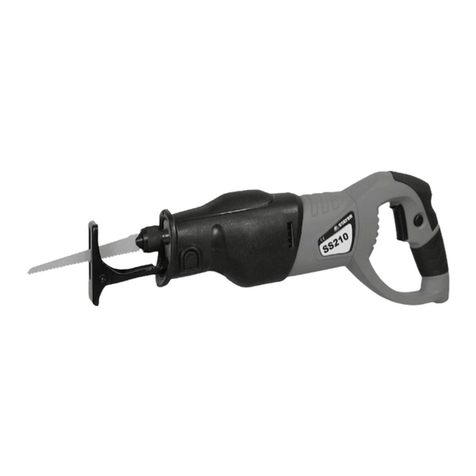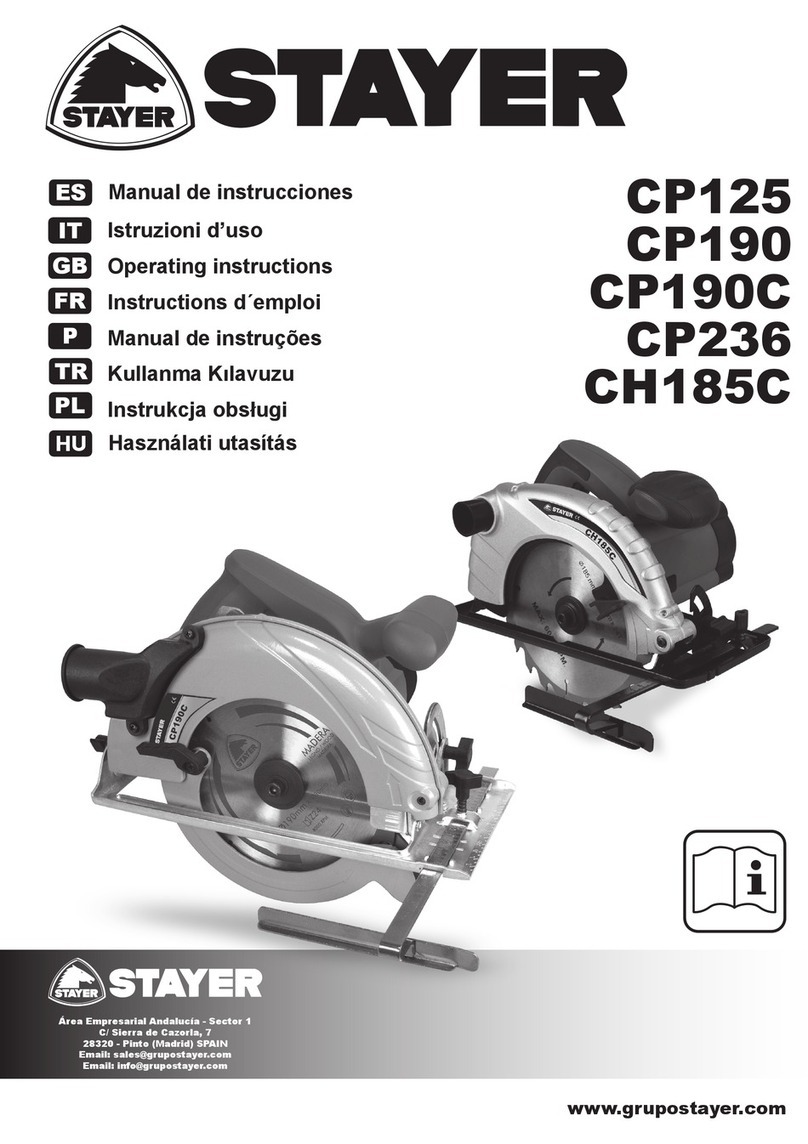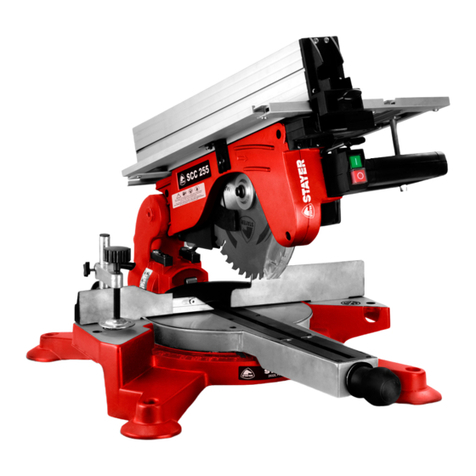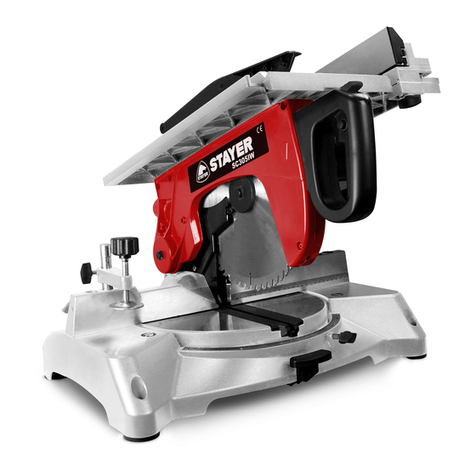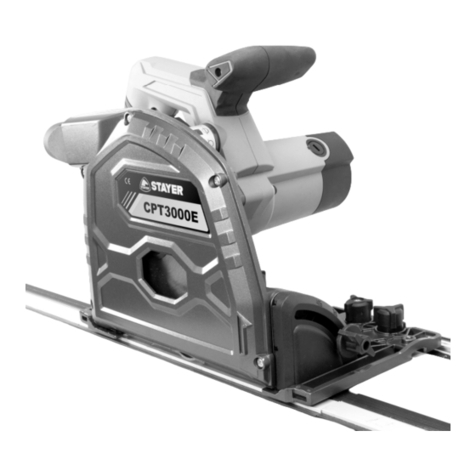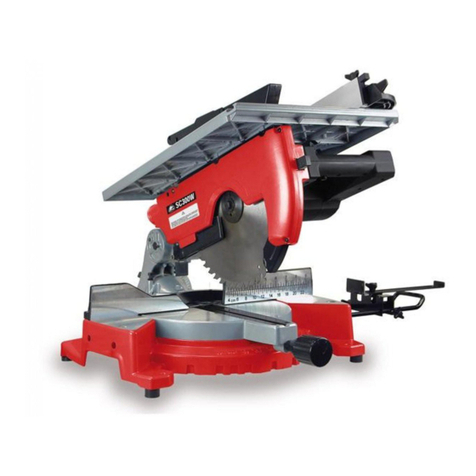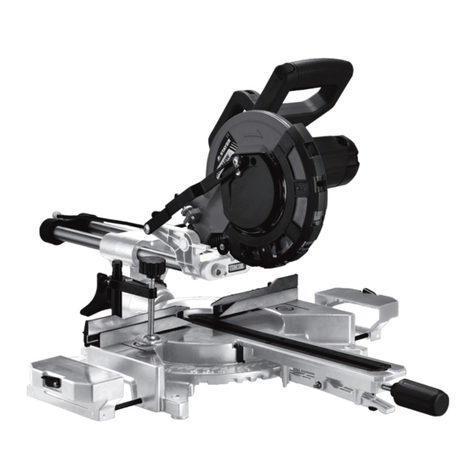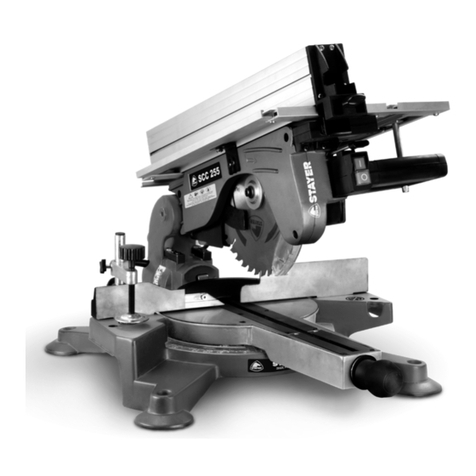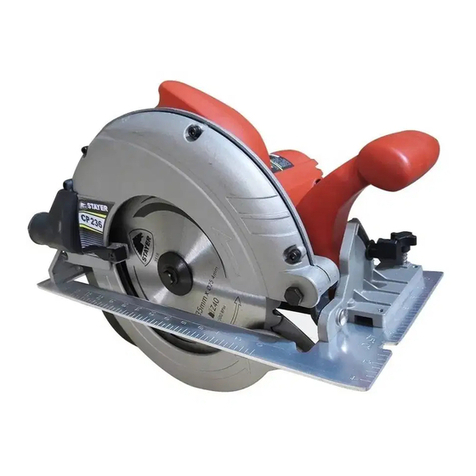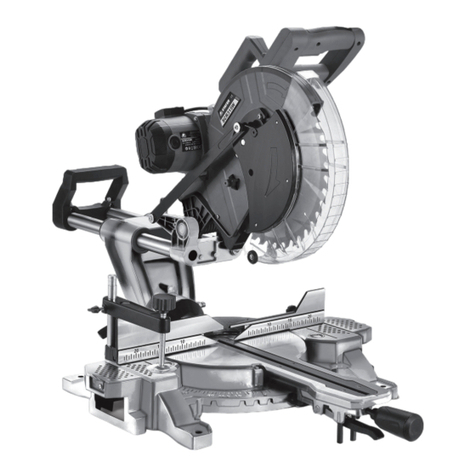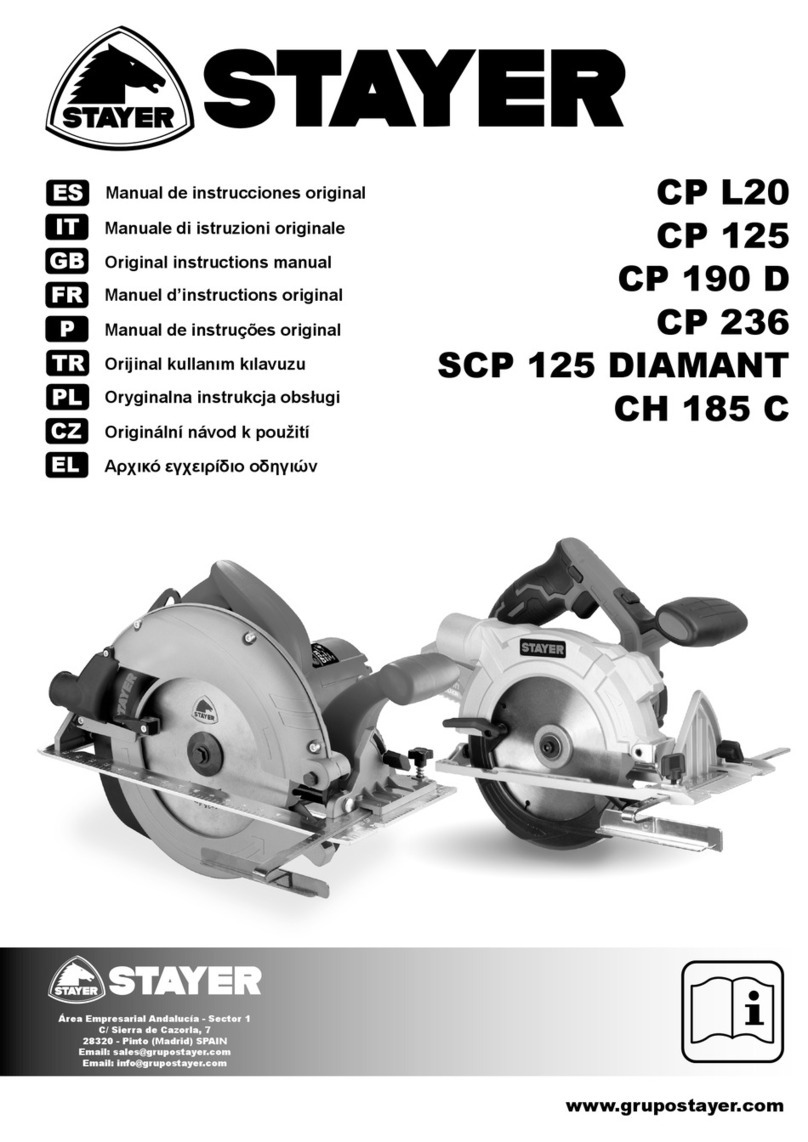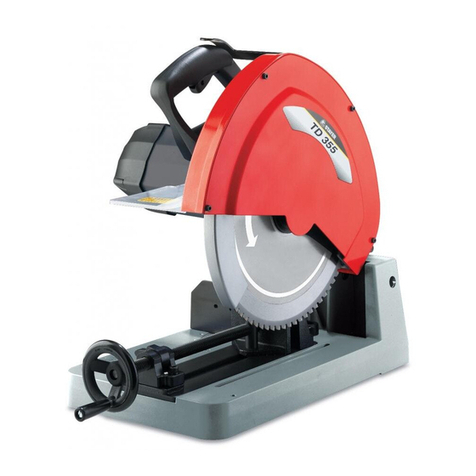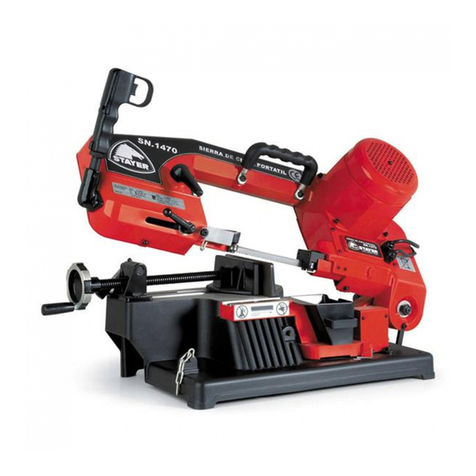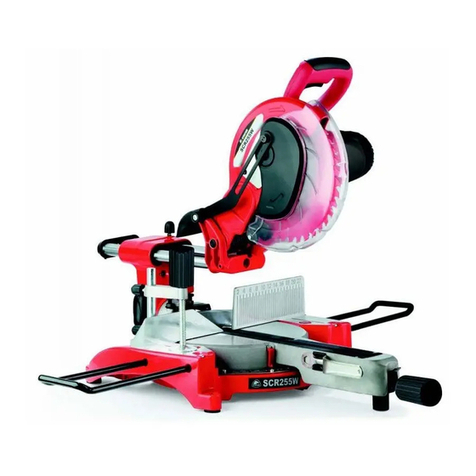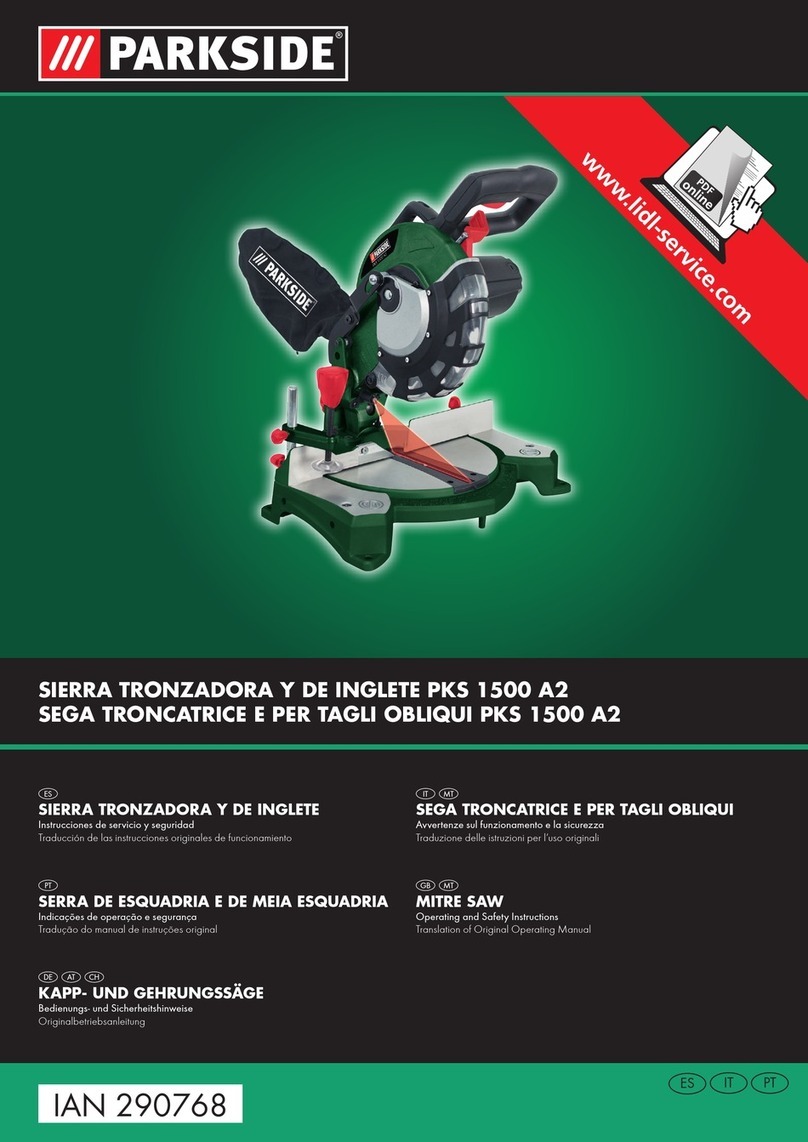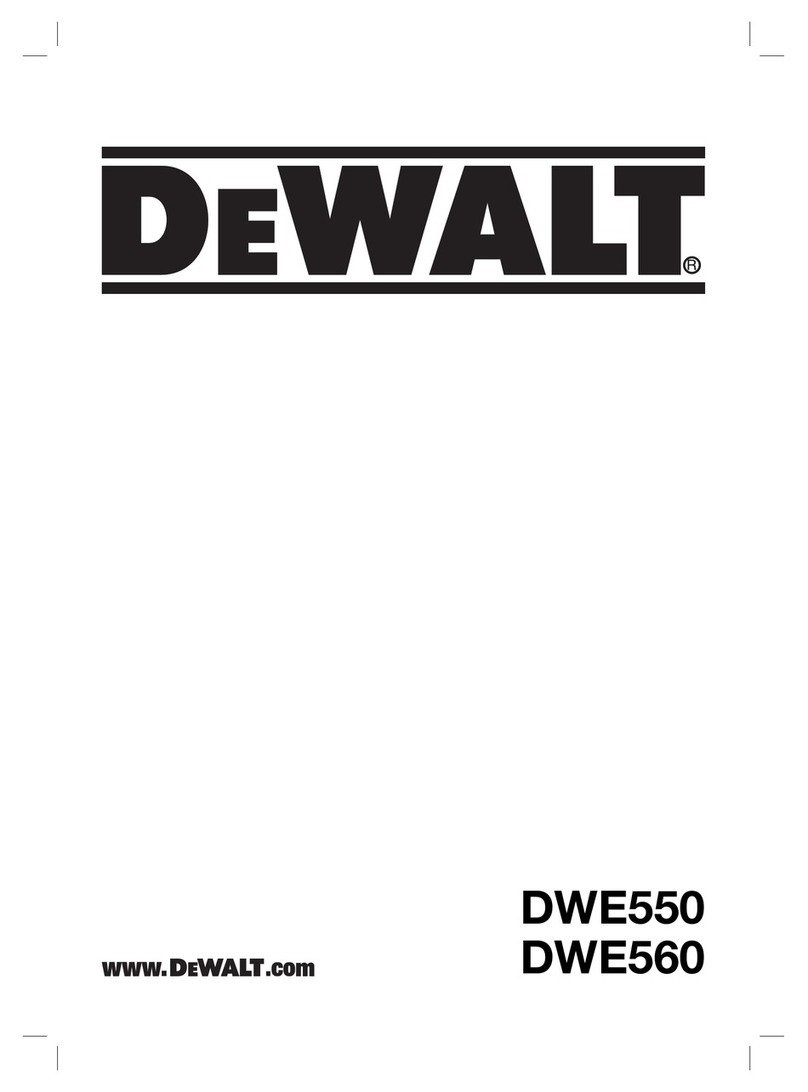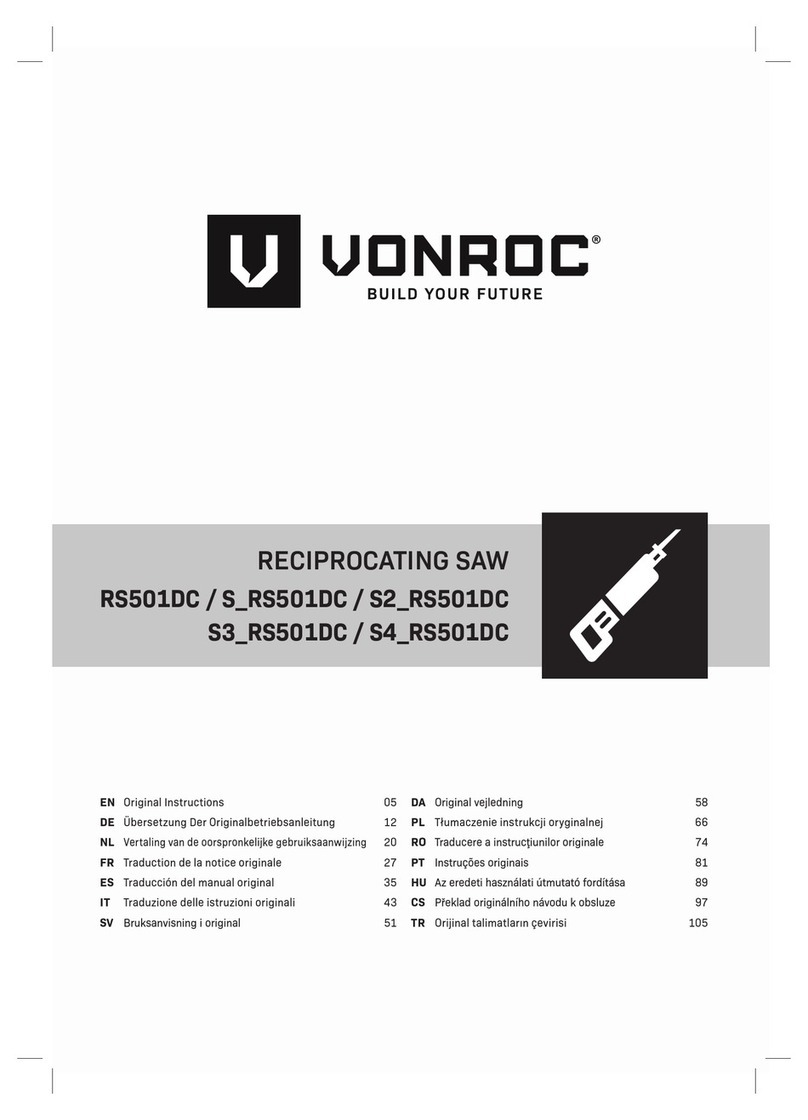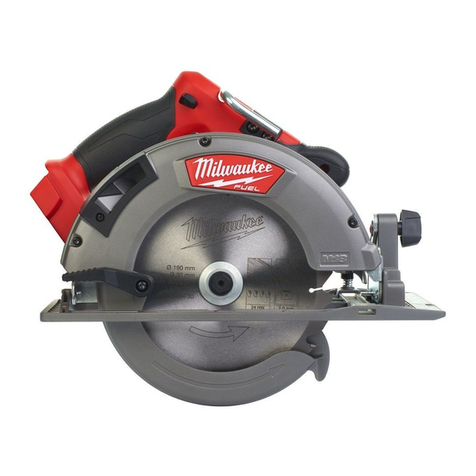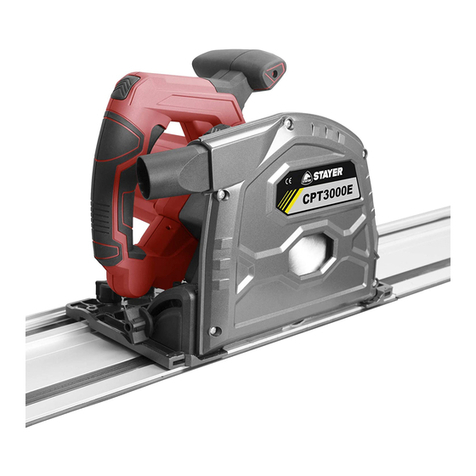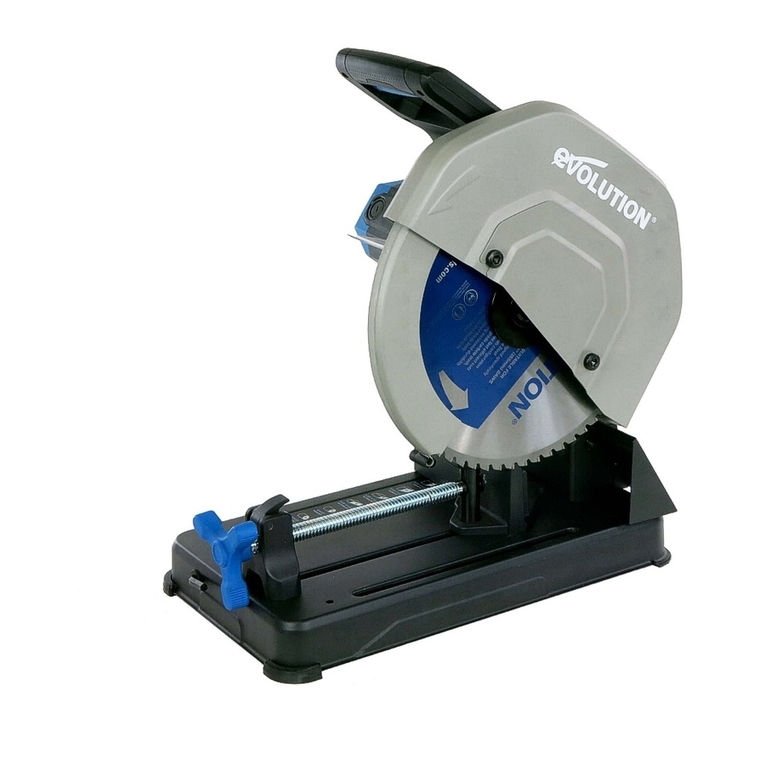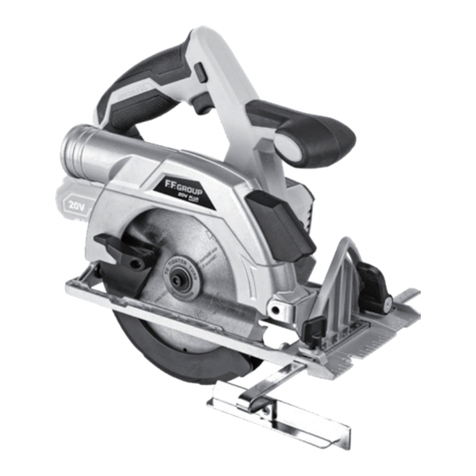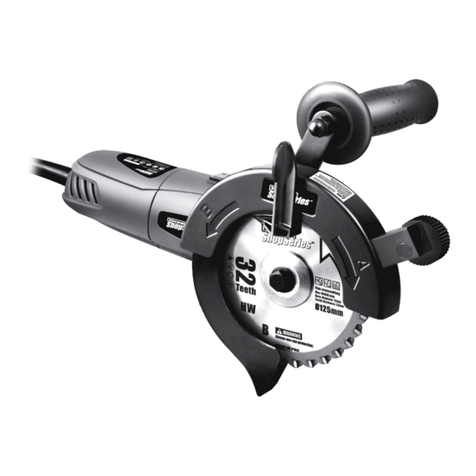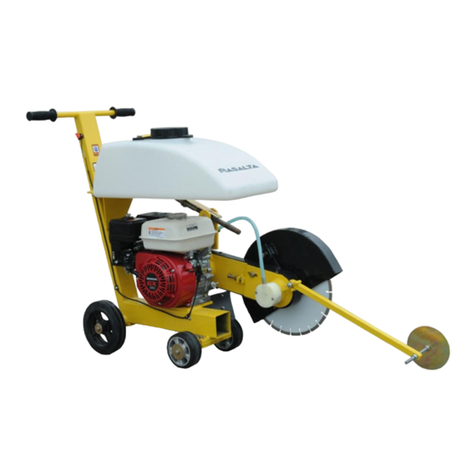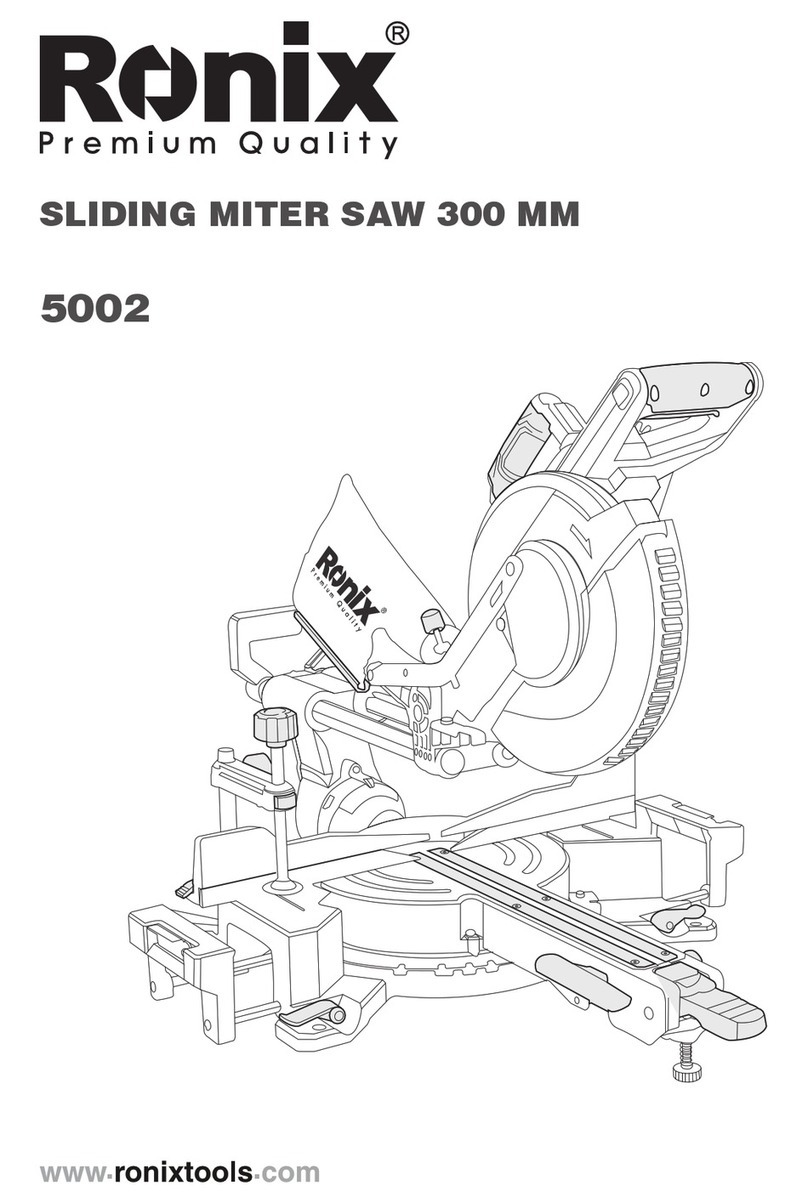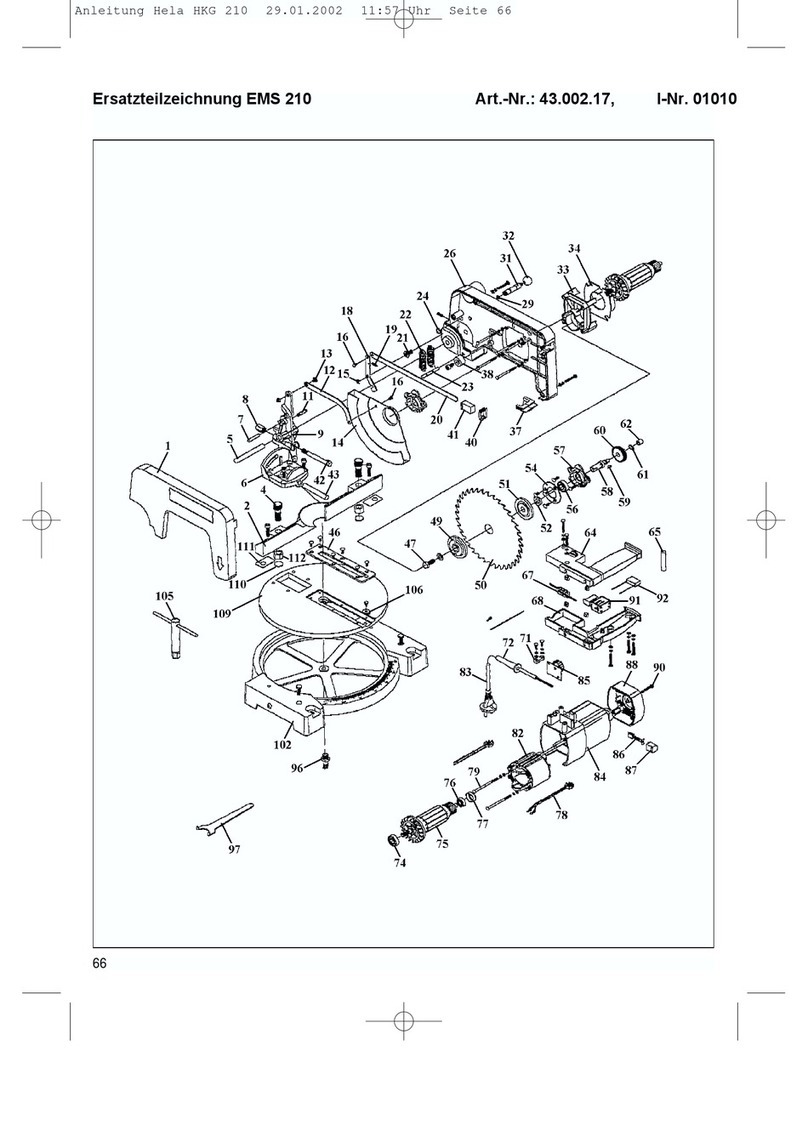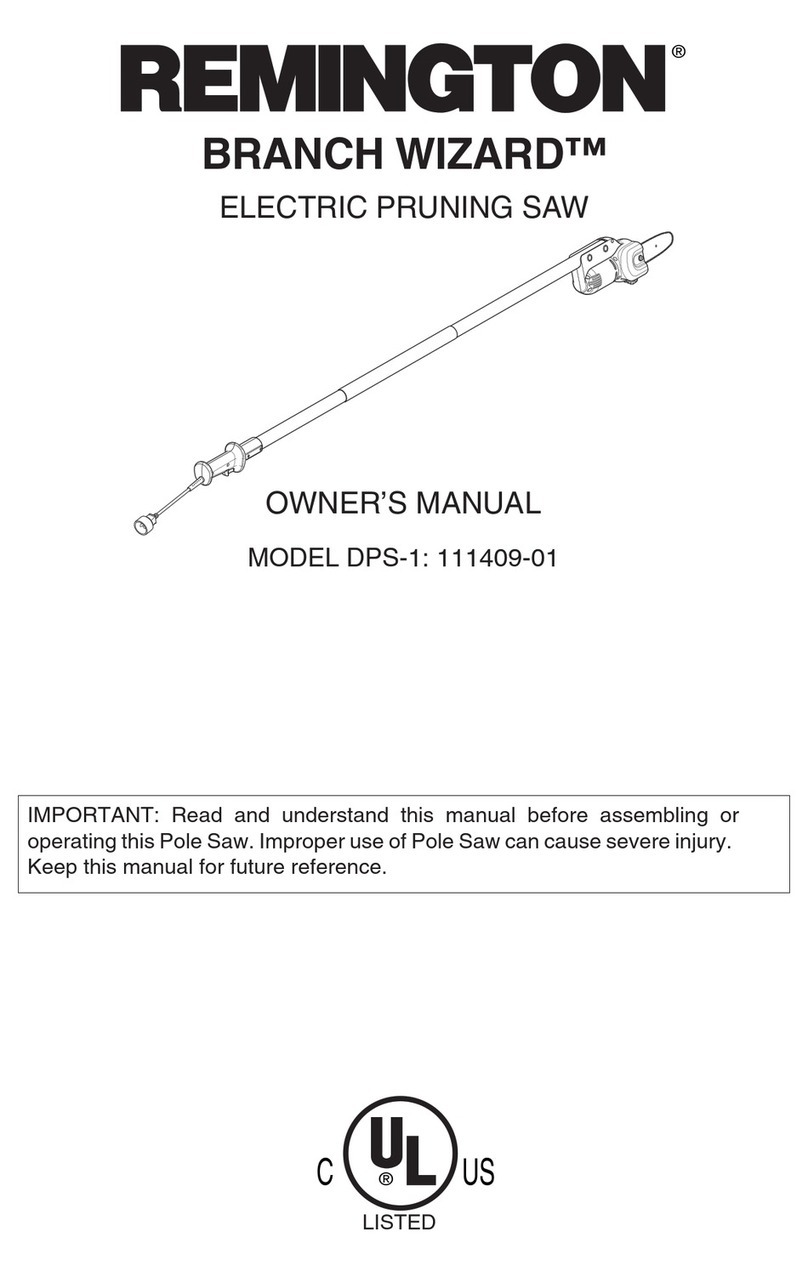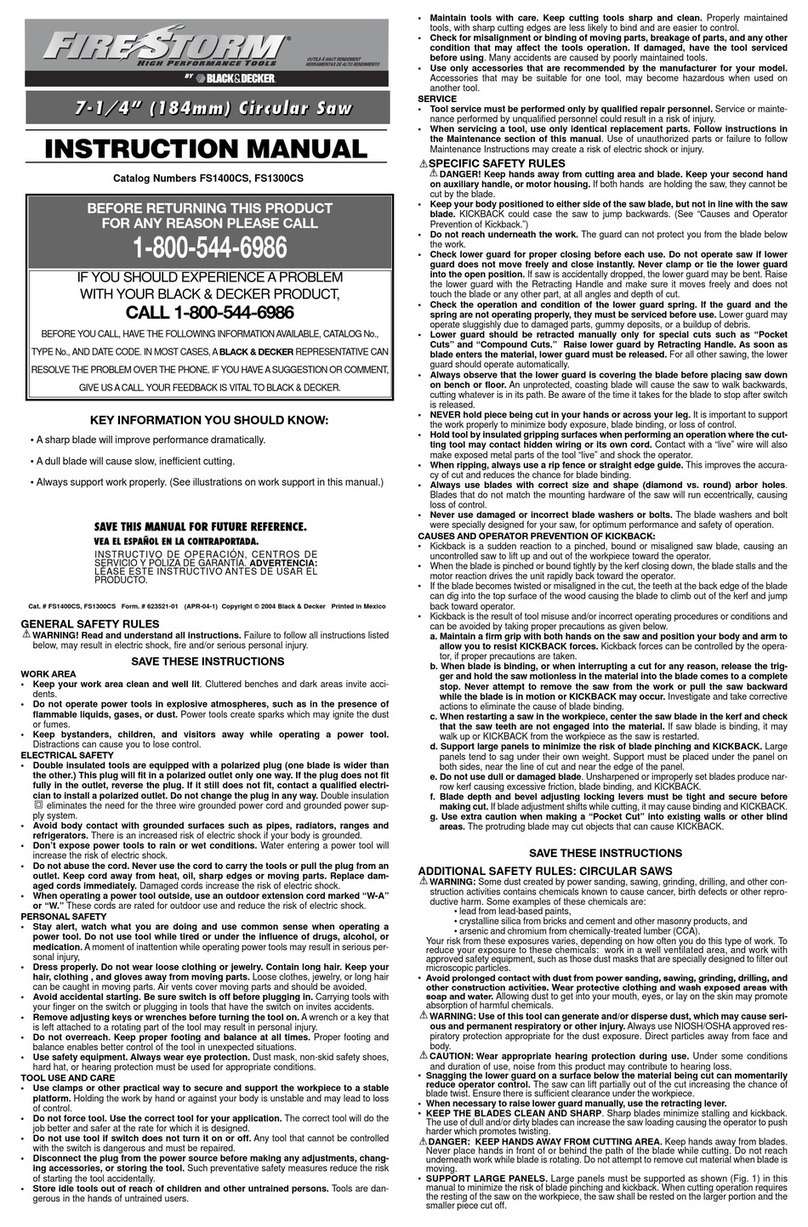
Only approaching the cutting disc running against the
workpiece when the disc reaches its maximum speed.
After starting wait at least 4 seconds until the disk rotate at
rated speed.
Always firmly clamp the workpiece. Do not cut
workpieces that are too small to clamp. Otherwise, the
clearance of your hand to the rotating cutting disc is too
small.
If the cutting disc becomes jammed, switch the
machine off and wait until the cutting disc comes to a
complete stop. Never attempt to remove a still running
cutting disc from the cut, otherwise there is danger of
kickback. Determine and correct the cause for the
jamming.
After switching off, do not stop the cutting disc by
applying lateral pressure to it. The cutting disc can
become damaged, break or lead to kickback.
Do not force the cutting disc into the workpiece and do
not apply too much pressure when using the power
tool. Particularly avoid jamming or wedging the cutting
disc when working corners or sharp edges. When the
cutting disc is damaged due to abuse, cracks can form that
can lead to breakage without prior warning.
Wear a work apron. Pay attention that other persons are
not put at risk from sparking. Remove flammable
materials in close vicinity. Sparking occurs when cutting
metal.
Use the cut off grinder only for cutting materials
mentioned under “Intended Use”. Otherwise, the cut off
grinder can be subject to overload.
Do not use damaged, out-of-centre or vibrating cutting
discs. Damaged cutting discs cause increased friction,
binding of the cutting disc and kickback.
Always use cutting discs with correct size and shape
(diamond versus round) of arbor holes. Cutting discs
that do not match the mounting hardware of the cut off
grinder will run eccentrically, causing loss of control.
Do not attach a saw chain woodcarving blade or
toothed saw blade. Such blades create frequent kickback
and loss of control over the power tool.
Observe the operating instructions of the cut-off wheel
manufacturer for assembly and use of the cut-off
wheel. Cut-off wheels that do not fit can lead to injury as well
as to jamming, breaking or kickback.
Do not use accessories which are not specifically
designed and recommended by the tool manufacturer.
Just because the accessory can be attached to your power
tool, it does not assure safe operation.
Do not touch the cutting disc after working before it has
cooled. The cutting disc becomes very hot while working.
The machine TV509 / TV509B / TV509C is intended for stationary
use with cutting abrasive discs to perform lengthways and
crossways straight cuts or mitre cuts to 45° in metal materials
without the use of water.
This manual is consistent with the date of manufacture of your
machine, you will find information on the technical data of the
machine acquired manual check for updates of our machines on
the website: www.grupostayer.com
1. Contents page
2.Specific safety instructions......................................20
3.Instructions for use....................................................21
3.1 Placement Tool.............................................................21
3.2 Assembly......................................................................21
3.3 Illustrated description............................................21
4.Operating instructions..............................................21
4.1 Placement and testing..........................................21
4.2 Tool change..........................................................22
4.3 Operation adjustment...........................................23
4.4 Limitations on the size of the workpiece.................23
4.5 General instructions for use..................................24
5.Maintenance and service instructions.....................24
5.1 Cleaning...............................................................24
6.2 Repair service.......................................................24
5.3 Warranty...............................................................24
5.4 Disposal and recycling..........................................24
6.Regulations................................................................24
6.1 Technical Data......................................................24
6.2 EU declaration of conformity.................................25
2. Specific safety instructions
Never stand on the power tool. Serious injuries could
occur when the power tool tips over or when accidentally
coming into contact with the cutting disc.
Always use the blade guard. A blade guard protects the
user against broken off parts of the cutting disc and against
accidental touching of the cutting disc.
Make sure that the guard operates properly and that it
can move freely. Never lock the guard in place when
opened.
Use the power tool only for dry cutting. Water
penetrating into a power tool increases the risk of an electric
shock.
Keep the mains cable away from rotating application
tools. The mains cable can be cut through or get caught.
Keep handles dry, clean, and free from oil and grease.
Greasy, oily handles are slippery causing loss of control.
Never remove cutting remainders, metal chips, etc.
from the cutting area while the machine is running.
Always guide the tool arm back to the neutral position first
and then switch the machine off.
Guide the cutting disc against the workpiece only when
the machine is switched on. Otherwise, there is danger of
kickback, when the cutting disc becomes wedged in the
workpiece.
ENGLISH
7
7













